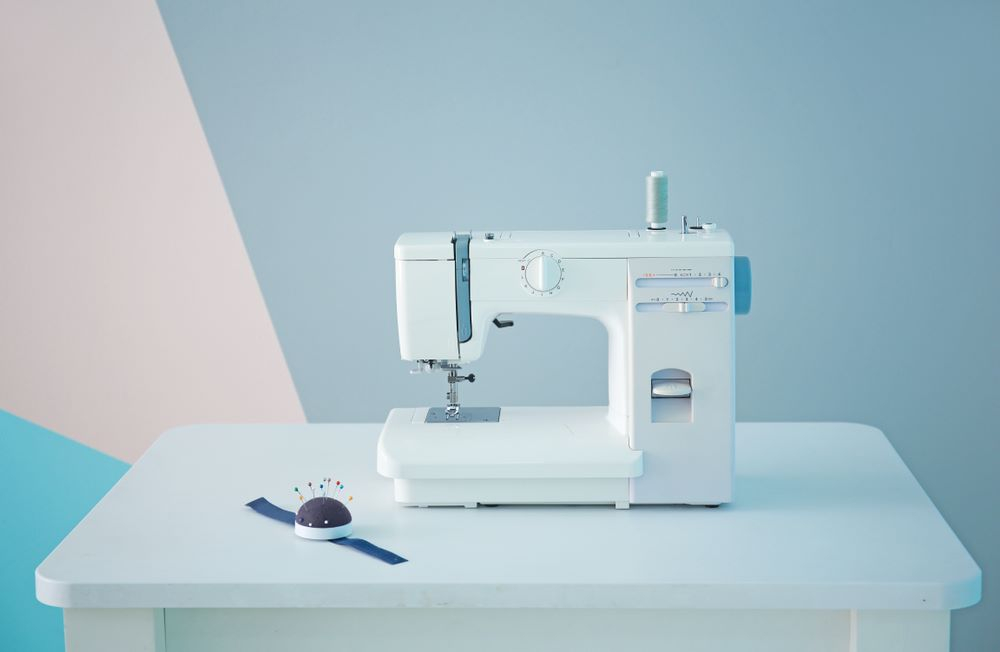The world of sewing can seem daunting to the novice, an intricate maze of tools, techniques, materials, and dials. You're probably wondering, where does one even start? Or perhaps you're a seasoned seamstress and have heard whispers of the overlocker, a mystical device said to transform one’s sewing prowess, yet its mystique leaves you intrigued yet hesitant. But what is an overlocker? How does one use it, and most importantly, how does it benefit the sewing process? Welcome to our comprehensive guide on overlockers, where we answer all these questions and introduce you to the universe of overlocking.
In this modern age, as the love for handcrafted, bespoke items resurfaces, sewing is amongst the skills catching the public's eye once again. Yet, in our fast-paced world, efficiency is paramount. Enter overlockers- the secret weapons of the sewing world. This guide will walk you through the nitty-gritty of overlockers, what they are, why they’re indispensable in a sewist’s toolkit, and how strategically utilizing them could enhance your sewing pursuits.
Delve into the knowledge and insider secrets about overlockers in this apt guide for both beginners and seasoned sewists. From their functionality to their varied benefits, we covered it all.
What is Overlocker and Why do You Need it?
It's not uncommon for sewing enthusiasts to mistake an overlocker for a seamstress's luxury rather than a necessity. Yet once acquainted with its functionality, you will start viewing it as an irreplaceable ally in your sewing adventures. An overlocker, or a serger as is known in America, is a machine designed to neatly finish off the edges of the fabric, in a quick, efficient manner that's pleasing to the eye.
You’d ask, why should I invest in an overlocker when I can stitch the edges with my regular sewing machine? Well, while a sewing machine can create a variety of stitches, it doesn't match the speed, efficiency, and finesse of an overlocker. The overlocker stands triumphant with its ability to trim excess seam allowance while simultaneously wrapping the thread around the edge, leading to a professional and clean finish.
The overlocker is therefore, not just an indulgence, but a handy tool that could truly elevate your sewing and speed up the process without compromising on the aesthetics.
How to Use an Overlocker
Once you've embarked on the journey of exploring the overlocker, you are bound to be curious about its operation. Initially, threading an overlocker may seem a tad bit complex due to multiple threads involved. But with practice, it becomes a cakewalk.
Contrary to the conventional sewing machine, an overlocker utilizes a looped threading system. This function allows it to intricately wrap the thread around the fabric edge, thereby preventing fraying. Furthermore, an overlocker is significantly quicker than your conventional machine, contributing to its appeal among sewists everywhere.
Lastly, the differential feed, the unique selling proposition of an overlocker, allows one to manage the pace at which the fabric is fed through the machine, enabling you to create unique finishes such as rolled hems and ruffles.
Advantages and Disadvantages of an Overlocker
No tool is without its strengths and weaknesses, and the overlocker is no exception. On a positive note, an overlocker dramatically enhances efficiency, allowing for quicker finishing of seams. In addition, it trims excess fabric while securing the edges, which results in a professional finish. Lastly, its capability to handle stretch fabrics with ease makes it indispensable in sewing knit or jersey fabrics.
The flip side, however, includes its complexity of threading and the potential difficulty in navigating curves due to its high speed. Moreover, unlike a sewing machine, an overlocker is not versatile in the variety of stitches it can produce.
When to Use an Overlocker
While the overlocker is a fantastic tool, it isn't always the go-to machine. It shines in scenarios where speed and clean finish for edges are imperative, such as sewing voluminous curtains or clothes. For knit garments, where stretching is involved, an overlocker’s strength is truly highlighted, as it ensures the stitch remains intact even with the fabric stretching.
However, for intricate, slow-paced projects, the traditional sewing machine holds its ground. Essentially, an overlocker complements the sewing machine but doesn't replace it. Understanding when to employ the overlocker is crucial to reaping its benefits.
Conclusion
To summarize, an overlocker is a powerful addition to any sewing enthusiast's toolkit. Its speed, efficiency in finishing seams, and ability in handling stretch fabrics make it an indispensable asset. While its usage might require a learning curve, the rewards it offers in terms of time-saving and professional finishes undoubtedly justify the learning process.
However, remember that an overlocker is not a standalone substitute for your traditional sewing machine. It shines the brightest when harmoniously used in tandem with your sewing machine, each playing to their strengths. Equipped with this newfound knowledge of overlockers, venture forth in your sewing adventures, to new horizons defined by efficiency, speed, and finesse.




.jpg)





Social Plugin